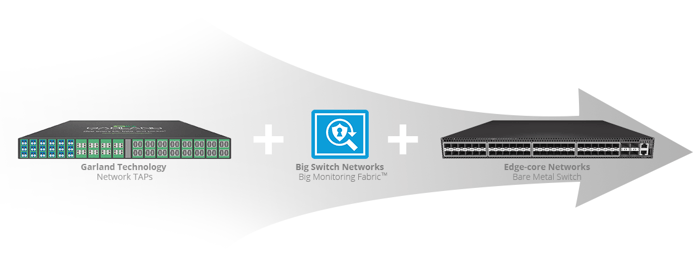

We recently partnered with Edgecore, a leading provider of open networking solutions of bare-metal hardware switches and access products, which utilize both independent commercial and open source software options. These include applications such as SDN (Software Defined Networking), Network Analytics, Virtualized Networks, Data Center network fabrics, and open access networks.
Cloud data center operators and leading enterprises have been deploying open network solutions for several years and the benefits are noticeable.
These open networking benefits are now available for many more networking use cases. Public and private cloud data centers of all sizes are being deployed with network fabric built from open leaf and spine switches.
[If you want to learn more about SDN, check out our free white paper, Architecting Data Centers for SDN and NFV In 40G and 100G Environments.]
Centralized control of traffic flows is critical for monitoring 10G, 25G, 40G and 100G networks. But before implementing SDN, network architects must ensure that they have a solid visibility plane that ensures 100% of packets will be seen by the SDN controller.

To achieve complete transparency with application monitoring tools, network architects must account for solutions and functions such as:
End-to-end SDN solutions always starts with a foundation of visibility. Network test access points (TAPs) are the approved and recommended hardware tool that allows you to monitor your network monitoring fabric, making a 100% copy of your network’s data providing your monitoring tools 100% visibility.
If the inline security tool goes off-line, the TAP will bypass the tool and automatically keep the link flowing. The Bypass TAP does this by sending heartbeat packets to the inline security tool. As long as the inline security tool is on-line, the heartbeat packets will be returned to the TAP, and the link traffic will continue to flow through the inline security tool.
If the heartbeat packets are not returned to the TAP (indicating that the inline security tool has gone off-line), the TAP will automatically 'bypass' the inline security tool and keep the link traffic flowing. The TAP also removes the heartbeat packets before sending the network traffic back onto the critical link.
While the TAP is in bypass mode, it continues to send heartbeat packets out to the inline security tool so that once the tool is back on-line, it will begin returning the heartbeat packets back to the TAP indicating that the tool is ready to go back to work. The TAP will then direct the network traffic back through the inline security tool along with the heartbeat packets placing the tool back inline.
Some of you may have noticed a flaw in the logic behind this solution! You say, “What if the TAP should fail because it is also in-line? Then the link will also fail!” The TAP would now be considered a point of failure. That is a good catch – but in our blog on Bypass vs. Failsafe, I explained that if a TAP were to fail or lose power, it must provide failsafe protection to the link it is attached to. So our network TAP will go into Failsafe mode keeping the link flowing.
Single point of failure: a risk to an IT network if one part of the system brings down a larger part of the entire system.
Heartbeat packet: a soft detection technology that monitors the health of inline appliances. Read the heartbeat packet blog here.
Critical link: the connection between two or more network devices or appliances that if the connection fails then the network is disrupted.